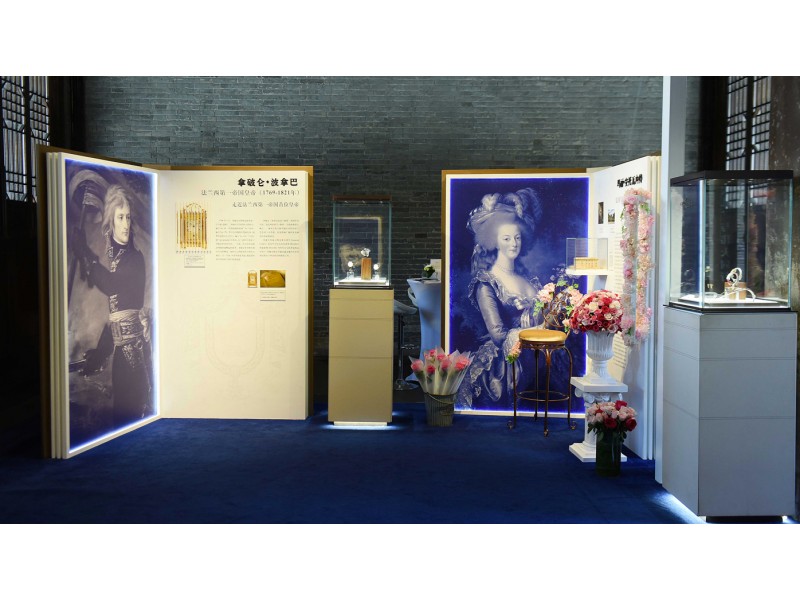
On June 26, 1801, or rather on 7 Messidor, year IX, since the Republican calendar was still in force in France1, Abraham-Louis Breguet earned the rights for a patent which would last for a ten year period for a new type of regulator called the “Tourbillon”. Several months earlier, on December 24, 1800 (3 Nivôse, year IX), the watchmaker had submitted the complete technical file accompanied by a watercolor technical drawing, stemming from his in-depth research and meticulous experimentation.
This was the second time that Breguet had requested and earned a patent. Three years earlier, on March 9, 1798 (19 Ventôse, year VI), he had taken out a patent for a “constant- force escapement” applicable to both watches and clocks. There would be no third time, since Breguet did not deem useful to register other patents after the Tourbillon. Did he find the procedure too cumbersome or pointless in his case? One could speculate endlessly about the reasons.
The French invention patent, stipulated by the law on January 7, 1791, was – and still is – a property title conferring upon its holder a temporary monopoly on industrial and commercial exploitation of his invention, as well as its legal protection, particularly against counterfeits, in exchange for its publication.
The “Tourbillon” case file, which is stored in Paris in the archives of the French National Industrial Property Institute (INPI), contains the accompanying letter addressed to the Minister of the Interior, who was responsible for the patent department. In these few lines, Breguet strove to sum up his thoughts and attempted to render an original, new and complex procedure intelligible for those not familiar with the ins and outs of horology. This letter, which is typical of Breguet’s writing style, deserves to be cited in its entirety.
Breguet, to the Minister of the Interior.
Citizen Minister,
I have the honour of presenting to you a memoir containing the description
of a new invention applicable to the time-measurement machines
that I call Tourbillon Regulator, and request the privilege of building
these Regulators for a ten-year period.
By means of this invention, I have succeeded in cancelling out by
compensation the anomalies due to the different positions of the centres
of gravity of the Regulator movement ; in distributing the friction over
all parts of the circumference of the pivots of this regulator and the holes
in which these pivots move, in such a way as to ensure that the lubrication
of the parts that rub together should remain constant despite the
coagulation of oils; and finally in eliminating many other sources of
error that influence the precision of the movement to varying degrees,
which the art (of horology) could only so far attain with a great deal of
trial and error and even often with uncertainty of success.
It is after duly considering all these advantages, the advanced means of
production that I have at my disposal, and the considerable expenditures
I have made in order to procure these means, that I have decided to lay
claim to a privilege of establishing the date of invention and thus
ensuring due compensation for my sacrifices.
Respectfully yours
BREGUET
Quai de l’Horloge No 5.

Tourbillon No. 2567 Gold hunter case with an engine-turned silvered dial, Roman numerals, small seconds at 6 o’clock and Breguet hands in blued steel. Breguet Museum collection.
Six months later, the official answer came from the Minister of the Interior, Jean-Antoine Chaptal granting Breguet’s request. This was shortly followed by the publication of the decision in the Bulletin des Lois de la République. It is amusing to note that the same Chaptal had purchased from Breguet on November 21, 1800 (13 Brumaire year IX) a repeater watch bearing N° 621.
With the Tourbillon, Breguet introduced a device that would cement his fame. After a long list of inventions: the perpétuelle watch, the gong-spring, the pare-chute, and more recently the sympathique clock and the tact watch, he again demonstrated his towering genius.
Once more, as an authentic pioneer, he created a word and the object – and the word, like the invention itself, did not occur by chance. What is the actual meaning of the word “Tourbillon”, now so renowned in its horological sense, so frequently used and perhaps so little understood? What were the reasons that led him to choose it as the most appropriate term?

Official document granting Abraham-Louis Breguet the patent for the tourbillon.
The most common meanings of the word tourbillon (literally “whirlwind” in English) are indeed perplexing: violent rotation, unpredictable and impetuous displacement, uncontrollable storm, or even, in the figurative sense, agitated behaviour. All of these appear little suited to the calm and regularity of an horological movement. “Trees uprooted by a tourbillon”; “there are some very dangerous tourbillons (whirlpools) in this river”; “the tourbillon of business and pleasure” are all examples often given by dictionaries. The analogy with horology must therefore be sought elsewhere, and enlightenment can be found in consulting two monuments of the French language: the Dictionnaire universel du XIXe siècle by Pierre Larousse and the Dictionnaire de la langue française by Emile Littré.
We learn there that another meaning of the word tourbillon, and one that is almost forgotten today, is the one defined by Descartes in his Principles of Philosophy: “Planets turn around the sun, carried by their vortex (tourbillon)”, quotes Larousse, while Littré is more explicit in speaking of “Name that the Cartesians use to give to the revolution of a planet, or a star, around its centre, and to the movement of the surrounding material that follows them”. This meaning was picked up and explained a century later by d’Alembert, again quoted by Littré: “This great philosopher (Descartes), in an age when astronomical observations, mechanics and geometry were still very imperfect, imagined, in order to explain the movements of the planets, the ingenious and famous hypothesis of vortices (tourbillons).”
Clearly on the borderline between astronomy and philosophy, the word tourbillon (vortex) refers to a planetary system and to its rotation around a single axis. This places us within a context of regularity and clear definition, far removed from the field of capricious weather, and is clearly the source of the analogy with horology, a science in which 18th century philosophers liked to see a miniaturized transposition of the cosmos.
It is clearly to this meaning that Breguet, a figure from the Age of Enlightenment who had read Descartes and the Encylopaedia, was alluding in choosing this term, drawing upon the knowledge acquired during his years of study with the Abbé Marie, an ecclesiastic passionately interested in mathematics and astronomy. He had already borrowed from the vocabulary of philosophy in referring to the perpetual motion of his perpétuelle or self-winding watches and from the vocabulary of physiology with his “sympathique” clock and his “tact” watches.
His tourbillon is thus a new construct which by constant rotation cancels out the effects of earthly gravity.

Breguet Tourbillon No. 1188 Sold in 1808. Breguet Museum collection
Abraham-Louis Breguet based his work on the observation that gravity is the enemy of the regularity of horological movements, in that it provokes variations in timing adjustment with each change of position of a watch when worn.
To solve this problem of gravity that is inherent to all human activity, the maestro had the idea of installing the entire escapement (meaning the balance and spring, the lever and the escape-wheel, the parts the most sensitive to gravity) inside a mobile carriage that performs a complete rotation each minute. Thus, since all the flaws are regularly repeated, they are engaged in a process of mutual compensation. Moreover, the constant change of point of contact undergone by the balance pivots in their bearings ensures enhanced lubrication.
Based on a principle that was brilliant and yet extremely complex to actually produce, the Tourbillon was far from operational in the summer of 1801. After two experimental models (the watch n° 169 gifted to the son of London-based horologer John Arnold in 1809, and watch N° 282 completed in 1800 and sold much later by Breguet’s son), the first Tourbillon would not be commercialized until 1805. The following year, the invention was presented to the public at the National Exhibition of Industrial Products that was held in Paris on the Esplanade des Invalides in September and October 1806. Described as a mechanism by which timepieces “maintain the same accuracy, whatever the vertical or inclined position of the watch”, the tourbillon regulator was a constant source of fascination thereafter. The greatest devotees of horology were unable to resist its appeal: the famous patron and Italian collector Sommariva, Monsignor Belmas, Bishop of Cambrai, the Bourbons of Spain who were to own up to three Tourbillons acquired between 1808 and 1814, or the Prince-Regent of England who acquired a large-sized Tourbillon in 1814, mounted on the top of a gilt bronze cone.

Bulletin des lois de la République
Somewhat mysterious and reserved for initiates, only 35 examples of the Tourbillon were sold between 1805 and 1823, the year of the maestro’s death, but his successors through to the present day have held it as their duty to perpetuate this exceptional expertise, while enriching it with fresh feats. Simple Tourbillons or models equipped with additional complications, no watchmaking enthusiast anywhere in the world can fail to be acquainted with Breguet’s marvellous invention, which was given a second lease on life in wristwatch form in the 1980s. Not to mention the many watch manufacturers that currently produce countless Tourbillons…
Even through the progress of watchmaking has made it possible to considerably improve regularity by more classic means, the Tourbillon, patented in 1801, remains a great invention, a legendary milestone in Breguet’s career. Moreover, through its discreet ties with astronomy and social sciences, it also emerged at a pivotal moment of European thought.



